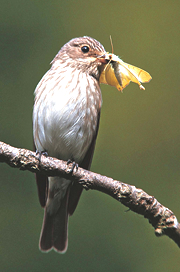The big bug count

The RSPB devised an innovative technique for estimating insect populations – count the splats on the numberplate as you drive in the country. This first survey will provide a baseline for future surveys. The study was prompted by an observant RSBP staffer who noticed that they had less insect splats on their windscreen in the UK than when driving in Europe.
Read the following pages…
Methodology
Read the what do I need to do page on the RSPB Web site and try writing answers to the questions below…
- Why do you think people were asked not to make special journeys to count the insects?
- Given distance travelled, the time taken and the count, what kind of calculation might the RSPB be doing?
- Why do you think the RSPB asked for the time of start and finish to be recorded in the 24h clock? I.E. Why do you think the time of day of the journey was significant?
- Why do the RSPB instructions emphasise the need to record zero counts?
- Why do the RSPB suggest that journeys between 20 and 80 miles might be best? What might happen if people did counts during very short journeys or very long journeys?
Confounding factors
Quotes taken from the Frequently Asked Questions page.
“In trials last year, we found that fewer insects were recorded at speeds under 30-35 mph, and that the number of splatted insects increased with faster speeds. We are keen to try to account for the effect of speed. So we have asked for your mileage and the time you start and end your journey. This will allow us to calculate an average speed for your journey. We will then be able to account for the effect of average speed on the variation in number of splats.”
- Can you suggest a reason for this apparent speed effect?
- Why did the RSPB divide the ‘splatometer’ into 6 squares even though they only need the total number of insects counted?
The repeat – bias?
- Say the RSPB repeat the count in 5 years. Can you think of any kinds of bias that might occur?
- Read the results page on the RSPB Web site. Write a one sentence summary of the results suitable for a local newspaper.
Finally, the results mention one splat every 5 miles on a splatmeter that has an area of about 225 cm2. Can you estimate the number of insects per cubic metre of air?